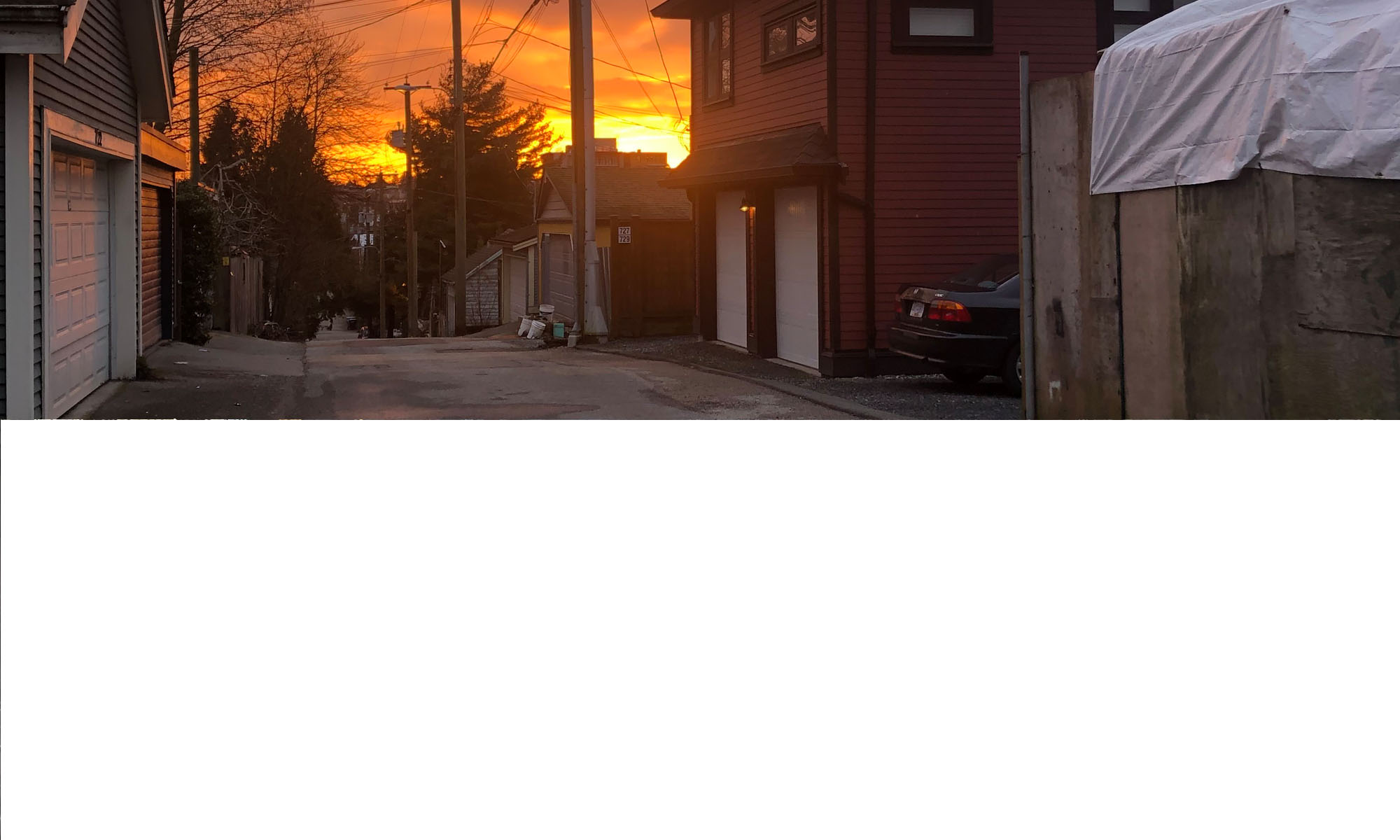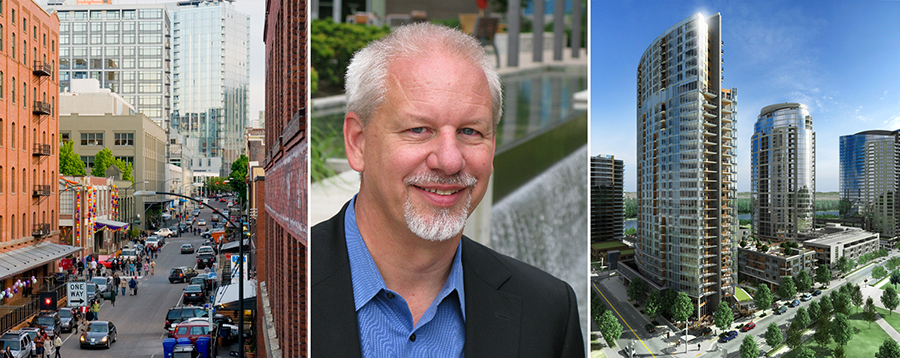At long last, the City of Vancouver has hired a Chief Planner, Mr. Gil Kelley.
Kelley comes with a solid background of West Coast urban planning experience: two years as head planner in San Francisco, fourteen years as director of planning for Berkley, and ten years as the lead in Portland. I’ll admit, as a Portland-o-phile that last bit piqued my curiosity, I’ve long admired the PDX approach to community involvement, human scale density, multi-modal transportation, sustainability, and placemaking.
So can we expect Portlandia-style planning in Vancouver’s future?
Of late, the City of Vancouver has been notoriously secretive about its hiring process, as such it’s anybody’s guess what the specific hiring criteria might have been: but former Director of Planning, Brent Toderian outlined five big fixes the new Chief Planner needs to achieve, (to wit: independence, good design, transparency, community engagement, and innovative leadership) all of which are noteworthy aspirations for the planning department. Ironically, Toderian was the last Director of Planning our city had — hired by the NPA, turfed by Vision Vancouver — the position of Director was re-engineered into two separate positions: Chief Planner and General Manager of Planning & Development (of eyebrow-raising note, those last two placements and the recent hire of City Manager earlier this year mean three of the most powerful five bureaucrats in our city are US citizens).
As far as Portland, we share a lot of similarities with our Cascadian sister city: Logging towns birthed in the crucible of railways, gold rush, and Western expansion; ugly histories (and legacies) of racism and displacement; former backwaters thrust into the limelight of desirability and imagination in the Pacific age. Both cities are experiencing rapid growth in population and housing costs. Portland’s rate of growth far surpasses our own, though not nearly the rate of housing unaffordability. Sadly Portland and Vancouver both share similar levels of street homelessness, though arguably Portland has shown willingness to look at more innovative community-based solutions like Dignity Village.
Logging towns birthed in the crucible of railways, gold rush, and Western expansion; ugly histories (and legacies) of racism and displacement; former backwaters thrust into the limelight of desirability and imagination in the Pacific age. Both cities are experiencing rapid growth in population and housing costs. Portland’s rate of growth far surpasses our own, though not nearly the rate of housing unaffordability. Sadly Portland and Vancouver both share similar levels of street homelessness, though arguably Portland has shown willingness to look at more innovative community-based solutions like Dignity Village.
Like Vancouver, Portland’s urban fabric was ultimately defined by their resistance to the 1970’s urban freeway push. Unlike Vancouver though, Portland’s freeway resistance gave rise to a robust and institutionalized system to involve communities in the planning process: the Office of Neighbourhood Involvement. The ONI allocates city resources and staffing to ensure grassroots residents associations are representative and meaningful partners in local development and land use decisions. With close to 100 neighbourhood associations, all officially recognized and supported by the City of Portland, there is a distinct DIY attitude, where citizens commandeer public space to create pocket parks and intersection repairs, the ONI further engages them to take an active role in planning their communities.
Portland, unlike Vancouver has a lot more space — almost three times as much land area in the city proper and a similar population means Portland has a lot less density. The density distinction manifests in Portland as delightfully walkable and human scale environments, incubators of small business and neighbourhoods, connected by good transit and bike-friendly road network. On Portland’s periphery “East of the 205” any pretense of smart density makes way to sprawl, but in established neighbourhoods closer to the city centre, density takes the form of tiny houses and newer mid-rise woodframe style construction that integrate reasonably well with the existing urban fabric.
In looking at Mr. Kelley’s tenure as Portland Director of Planning – there are two noteworthy highlights: one good, one not-so-good.
The good, The Pearl: master planning with robust inclusionary zoning

The Pearl District is kind of Portland’s Yaletown, a former brownfield (railyard) site: with pleasant streets, interesting architecture mixing old and new, lots of public amenities and a decent mix of affordable housing that far surpass our own targets for inclusionary zoning. The 130+ acre Pearl site has targetted 35% affordable housing in its mix and currently sits at around 28%, where Portland defines affordable housing as 30 percent of gross household income for rent and utilities (Vancouver on the other hand barely ever meets the 20% inclusionary target and defines affordable housing as “something somebody can afford”).
Along with having “good bones” and historic context, the Pearl’s success in no small part can be ascribed to the culture of neighbourhood involvement. Residents articulated and pushed for livable communities, with affordable housing targets and good local serving transit.
The not-so good, Portland’s attempt at Vancouverism: The Portland South Waterfront.
I’ll admit that after speaking with architects, planners and community leaders about what worked and what didn’t in their city, and visiting Portland’s many interesting, inclusive, and vibrant neighbourhoods, I was aghast when I came across the South Waterfront. It reminded me of the worst of Vancouverism: point and podium architecture, glass curtainwalls and big frontage ground oriented retail, the only saving graces were pretty parks, and a nice riverwall — oh and good transit connections to get the hell out of there. What struck me the most was in comparison to the other vibrant neighbourhoods of Portland, the SW District was antiseptic, boring and devoid of vibrant street life. Perhaps unsurprisingly, like Vancouverism, the housing mix in that district falls well short of the Pearl, with units of affordable housing only in the double digits and far less robust inclusionary zoning targets.
Like the Pearl, the “SoWa” was a brownfield site, but what it lacked were the good bones and thoughtful engaged residents to breathe life into the area. Instead, the SW felt like it was a project guided by the hand of private developers. It should be noted the other extenuating circumstance with the SoWa, notably the large anchor tenant nearby in the Oregon Health and Science University and facilities and the role they played in the type of community built.
Urban Renewal and tax-increment financing
Both the Pearl and SoWa share a similarity in Portland’s funding model for big urban renewal projects. Portland, by way of its urban renewal commission the Portland Development Corporation is able to leverage the potential of these projects through bonds. The bonds in turn are paid off by tax increment financing: the expectation of future property tax revenues resulting from increased density will pay off the bonds over the course of decades. The TIF structure puts that city in the driver’s seat, where robust targets for public benefits and affordable housing can be mandated and prioritized. It’s a stark contrast to here in Vancouver, where developers carry the upfront cost and the city effectively plays a junior partner in negotiating affordable housing and public benefits. If the proof is in the pudding, it’s worth noting that Portland’s City Council was able to repsond to their own housing crisis by earmarking 45% of all urban renewal funding for affordable housing.
Unfortunately, the very idea of urban renewal and tax-increment financing are impossible under our antiquated Vancouver Charter. With the mandate of our new planner including big urban renewal projects like NE False Creek and densifying Broadway, the conversation shifts to how those will happen. So here is my own five big fixes the new chief planner needs to achieve.
Five big Portland-style fixes for Gil Kelly
1. Make the case for tax increment funded urban renewal.
Bring strong leadership from the planning department to push for changes to the Vancouver Charter that will allow us to look toward wresting the control from developers into the hands of local government. With a provincial election coming, now is the time to do it.
2. Create an Office of Neighbourhood Involvement model for Vancouver.
Redefine the relationship between communities and the city. Bring neighbourhoods in as partners in planning.
3. Make meaningful commitments to inclusionary zoning and affordable housing.
Redefine what “affordable housing” means in the context of the people who actually live here, push for more robust inclusionary zoning in big projects.
4. Save cash, less flash when it comes to sustainability.
Portland manages a great deal of cost-effective sustainable measures: simple solutions like bioswales in pedestrian bulges to manage stormwater and bike boulevard neighbourhood greenways, which prioritize cyclist safety while limiting cars to local vehicle traffic and calming neighbourhood streets for all users. Install more bike parking for locals. Encourage local DIY placemaking as a means to nurturing walkable communities. Grow back our tree canopy. Improve the process for small scale developments, residential infill and forms like row and permiter housing.
5. Be bold, but be transparent.
Kelley will be taking on some big urban renewal projects, including the expectation to fund a new SkyTrain with transit-oriented development. I’d suggest the failure of the transit plebiscite was in no small part influenced by public distrust of Translink and the Mayor’s Council. Portland has done a good job of multimodal transit, prioritizing LRT and electric streetcars over expensive subways and diesel busses. A Broadway Subway to Arbutus may be a done deal, but let’s look at other options when it comes to improving our network to UBC and city-wide, and what other forms of transit oriented development might look like. And while he’s at it, show some boldness by breaking from that clichéd Vancouverism pastiche of new urbanism.
Welcome to Vancouver Mr. Kelley.

